Syria’s Assad: The president who led a bloody crackdown
Sign up now: Get ST's newsletters delivered to your inbox
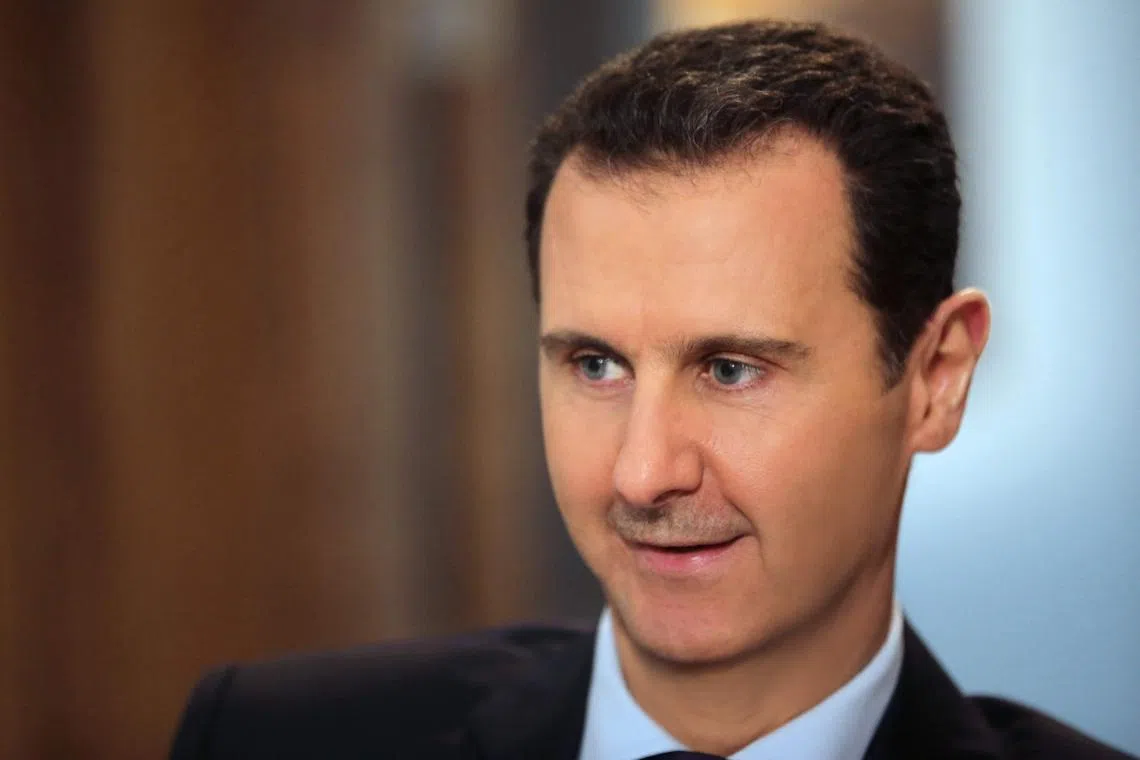
Syrian President Bashar al-Assad, who ordered the 2011 crackdown on a peaceful protest, has reportedly left the country in what could signal the end of his 24-year rule.
PHOTO: AFP
Follow topic:
BEIRUT – Syrian President Bashar al-Assad oversaw a merciless crackdown on a pro-democracy revolt that morphed into one of the bloodiest wars of the century.
On Dec 8, as rebels entered the capital,
After facing down nationwide protests demanding his ouster and an armed rebellion that he all but crushed, Mr Assad had – until a lightning rebel offensive – taken back control of much of Syria in the civil war that began in 2011.
Quiet in demeanour, Mr Assad had for years relied on his alliances with Russia, Iran and Lebanon’s Hezbollah to maintain power.
While leading a merciless war of survival for his rule, he presented himself to his people and the outside world as Syria’s only viable leader in the face of an Islamist threat.
But an Islamist-led rebel offensive that began on Nov 27 wrested city after city from his control.
On Dec 8, the rebels announced they had entered Damascus.
Shortly afterwards, the Syrian Observatory for Human Rights said Mr Assad had left the country, while the rebels themselves said the “tyrant” had “fled”.
No real opposition
For years, Mr Assad had cast himself as the protector of Syria’s minorities, a bulwark against extremism and the sole possible purveyor of stability for a country ravaged by war.
In multiple votes held over the years, conducted solely on government-held territory, he took the vast majority of the ballots, amid accusations from Western countries and rights groups that the elections were neither free nor fair.
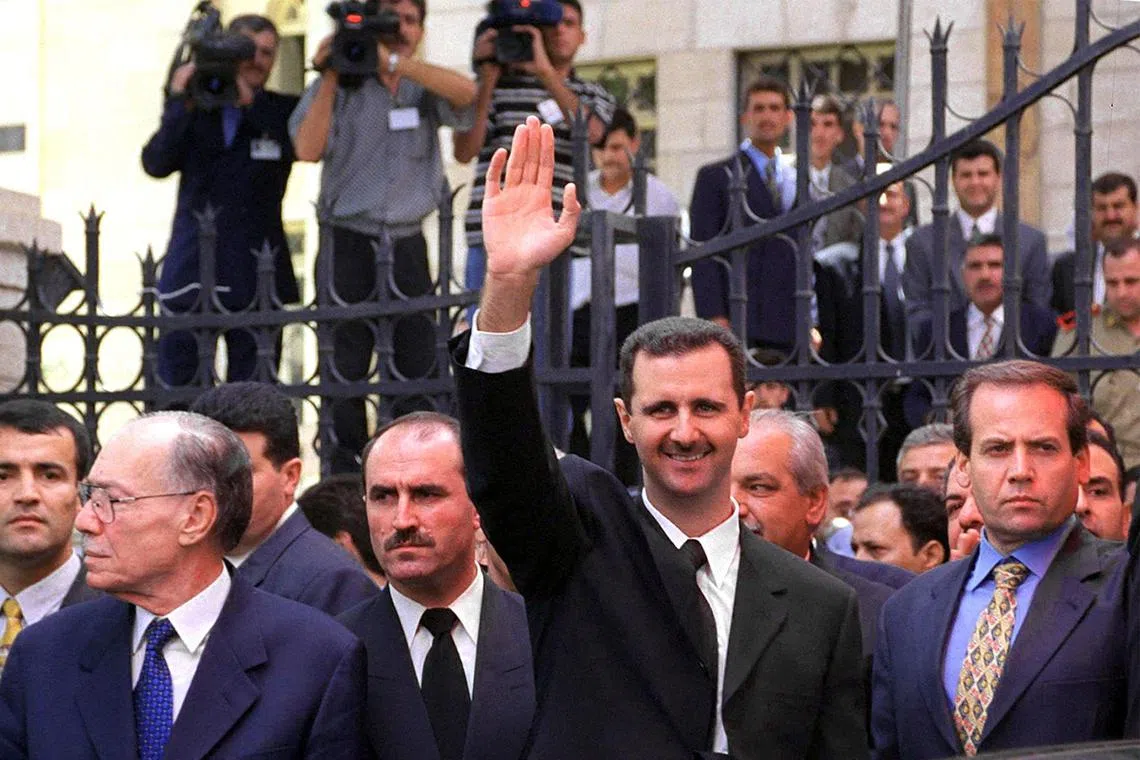
Mr Bashar al-Assad waving to supporters outside Parliament in Damascus on July 17, 2000, after taking the oath of office.
PHOTO: AFP
In official meetings, during interviews and even on the front lines, the 59-year-old ophthalmologist by training conducted himself calmly.
Behind the facade, however, was an astonishing ability to hold onto power amid multiple waves of violence and transformative change in Syria and the wider region.
‘Shuffle the cards’
One journalist, who met with Mr Assad on several occasions before and after war broke out in 2011, told AFP that he is a “unique and complex figure”.
Mr Assad has “the same qualities” as his father Hafez al-Assad, who ruled Syria for nearly three decades until his death in 2000, said the journalist, who declined to be named.
Mr Hafez al-Assad, head of the Syrian Baath Party, imposed a secretive, paranoid regime where even the slightest suspicion of dissent could land one in jail or worse.
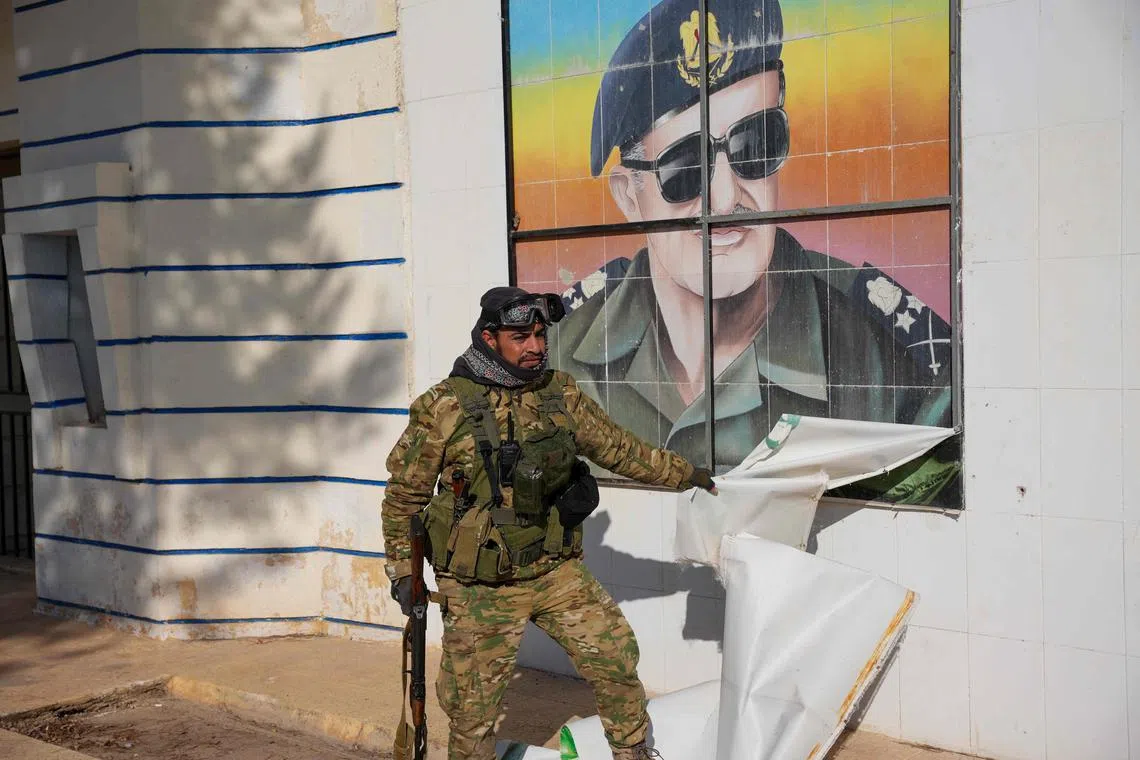
An anti-government fighter standing next to a portrait of former president Hafez al-Assad at the Kweyris military airfield in the eastern part of Aleppo province on Dec 3.
PHOTO: AFP
The younger al-Assad was never meant to become president.
But his life changed radically when his older brother Bassel, who was being groomed to inherit power, died in a road accident in 1994.
He then quit his studies in ophthalmology and left London, where he had met his wife Asma, a British-Syrian and Sunni Muslim who worked for financial services firm JP Morgan. She was once dubbed a “rose in the desert” by Vogue magazine.
Back home, he took a course in military studies and was tutored in politics by his father.
When his father died, Mr Assad became president by referendum, running unopposed, then winning a second term in 2007.
Sworn in at the age of 34, Mr Assad was initially seen by Syrians pining for freedoms as a reformer who could do away with years of repression and introduce economic liberalisation.
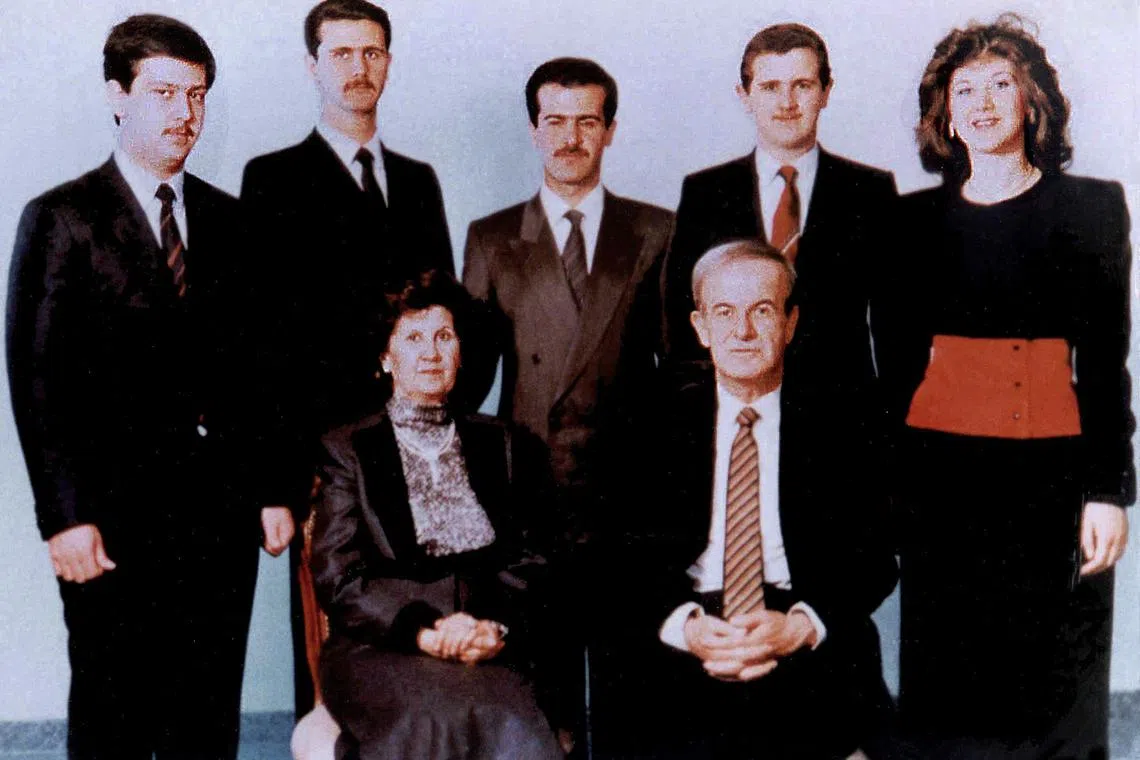
A family picture dated 1985 shows Syria’s late president Hafez al-Assad and his wife Anissah Makhlouf (seated) and, behind them, (from left to right) their five children: the youngest son Maher, deposed president Bashar, the late Bassel, the late Majd, and Bushra.
PHOTO: AFP
In the early days, Mr Assad would be seen driving his own car or having dinner at restaurants with his wife.
He relaxed some of the heavy restrictions that existed under his father.
Deadly crackdown
But his initial image as a reformer quickly evaporated as the authorities arrested and jailed academics, intellectuals and other members of what was then known as the Damascus Spring movement.
When the Arab Spring reached Syria in March 2011, peaceful demonstrations broke out calling for change.
Mr Assad, who was also commander-in-chief of the armed forces, responded by ordering a brutal crackdown on the protesters. Civil war swiftly ensued.
Throughout the war, which killed more than 500,000 people and displaced half the population, Mr Assad’s position on the demonstrators and the opposition did not change.
To Syria and to the world, he justified the bombings and military campaigns as a war on “terrorists”.
Meanwhile, his security apparatus enforced a brutal system of imprisoning dissidents in a network of detention centres and jails dotted around the country that have become notorious for abuses.
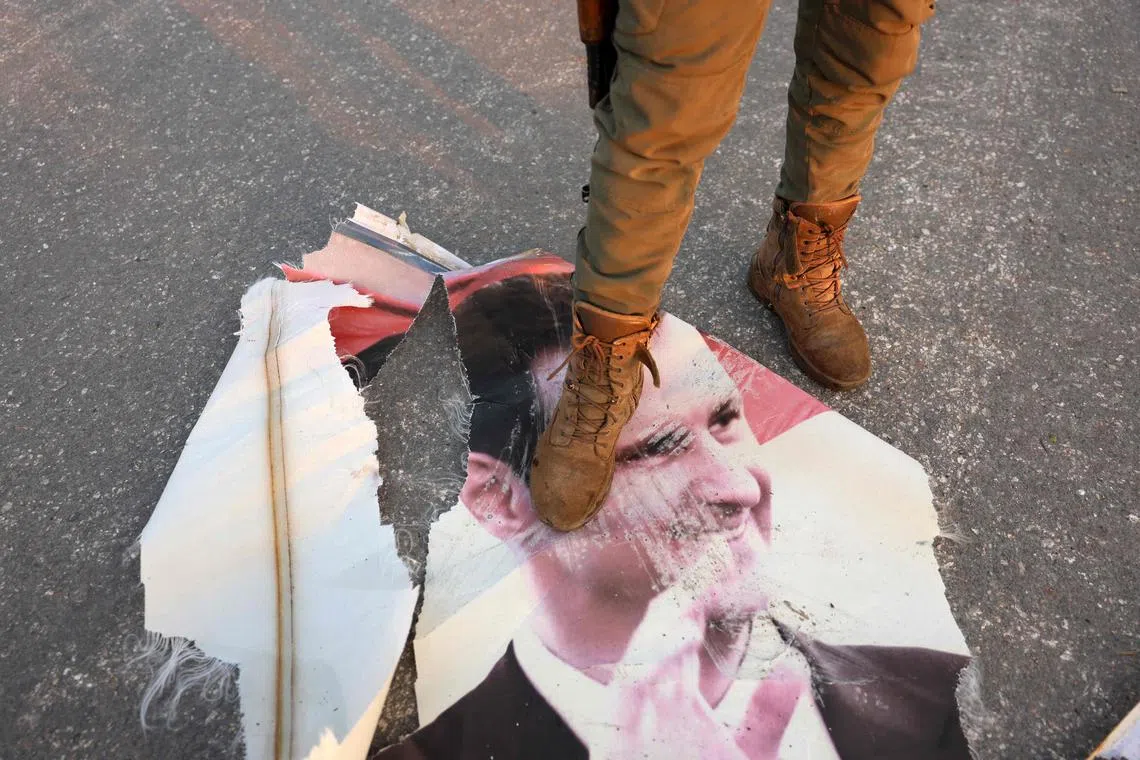
An anti-government fighter stepping on a shredded portrait of Mr Assad in Hama, a day after rebels captured the central-western city, on Dec 6.
PHOTO: AFP
The father of three children was the subject of countless cartoons by dissident artists depicting him as a killer, not least in the aftermath of the 2013 chemical attacks on rebel bastions around Damascus.
Since the start of the Islamist-led rebel offensive, Mr Assad has echoed his long-held stance that the conflict in Syria is machinated from abroad.
“The terrorist escalation reflects the far-reaching goals of dividing the region and fragmenting the countries in it and (to) redraw the map in line with the objectives of the United States and the West,” Mr Assad said last week. AFP

